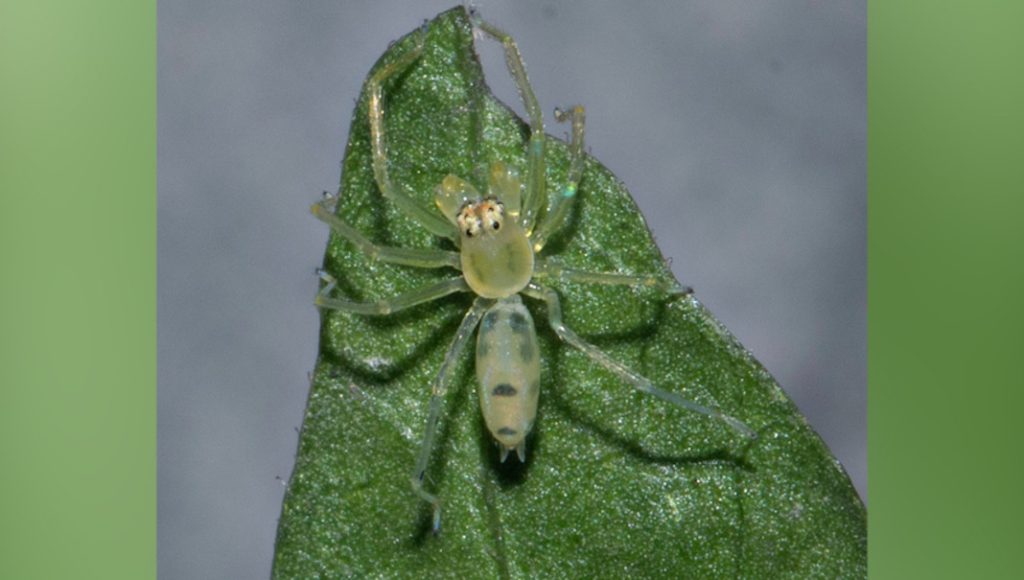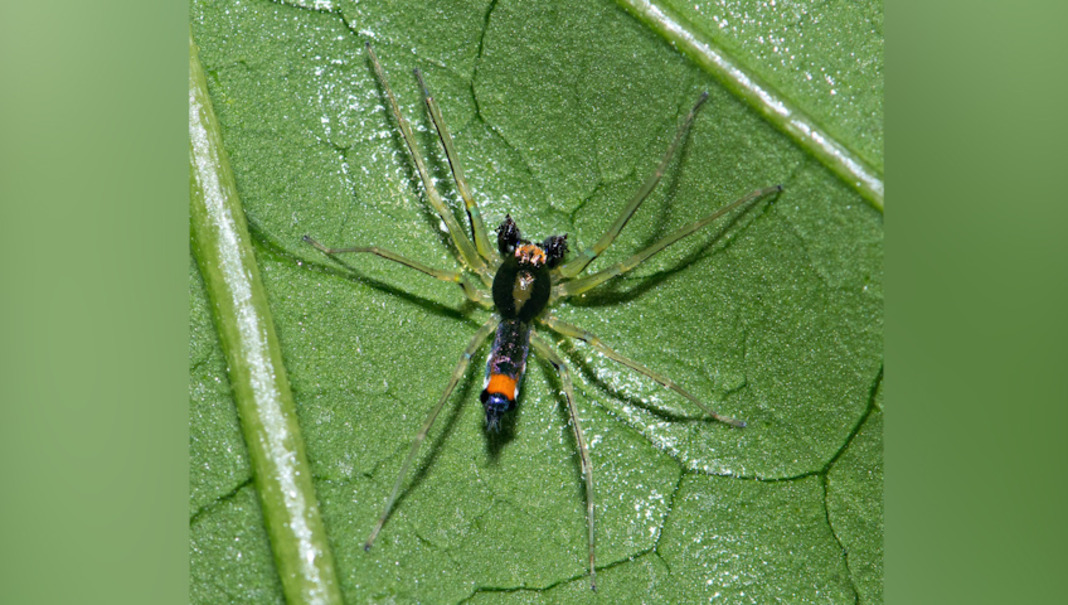Guwahati, Sep 1: In an encouraging development for the scientific community, a team of undergraduate researchers have stumbled upon a previously unrecorded spider species in Meghalaya.
The students from Moran College and Dibrugarh University from Assam and a researcher from Wild Tripura Foundation who were searching for insects along a forested stream in Byrnihat noticed a male and a female specimen of Asemonea tenuipes which was settling underneath leaves at around 11:15 hours on January 7, 2024.
The students were conducting opportunistic surveys from 1 January 2024 – 10 January 2024 to study entomofauna as a part of undergraduate research. The study area lies adjacent to National Highway 40 in the Ri-Bhoi district of Meghalaya.
The team meticulously documented their observations using high-resolution photography before releasing the specimens unharmed. This finding is particularly significant as it is the first recorded instance of A. tenuipes in Meghalaya, a region where spider diversity remains relatively unexplored.

“The exploration of spider diversity in Meghalaya remains largely uncharted, with only a limited number of studies undertaken in recent decades. While these studies have laid some groundwork regarding spider species in the region, none have reported the presence of the salticids A. tenuipes, a notable omission. In this research, we present the first documentation of A. tenuipes in Meghalaya. This discovery not only enriches our understanding of spider diversity within the state but also contributes valuable insights into the broader distribution patterns of these species across a wider geographical expanse” the researchers said who have reported the finding in a scientific journal.
The distribution range of A. tenuipes encompasses several countries in South and Southeast Asia, including India, Sri Lanka, Nepal, Myanmar, Thailand, Vietnam, and Singapore. In India, the species has been recorded by several authors in the past few decades.
The genus Asemonea, part of the sub-family Lyssomaninae, is distinguished by its unique physical characteristics such as a low cephalothorax, transverse rows of eyes, and slender legs. Globally, there are 25 species within this genus, with only two known to be found in India.
The country hosts over 1,700 spider species, with notable hotspots in the Western Ghats, Eastern Himalayas, and the northeastern states, including Meghalaya Spiders play a crucial role in pest control and maintaining ecological balance, with jumping spiders, in particular, being effective predators of numerous insect pests.
“The documentation of Asemonea tenuipes is expected to stimulate further research into the spider diversity of Meghalaya, potentially uncovering more species and contributing to conservation efforts aimed at preserving the region’s unique biodiversity. This discovery underscores the importance of continued exploration and study of lesser-known species to better understand and protect our natural environments,” the researchers said.




